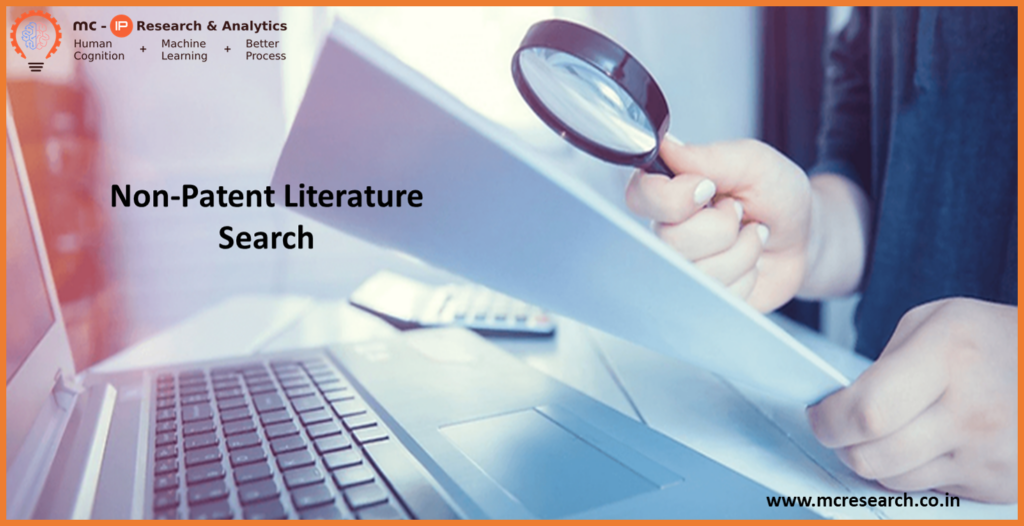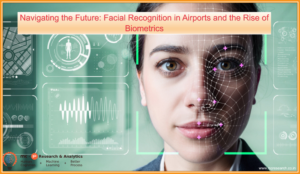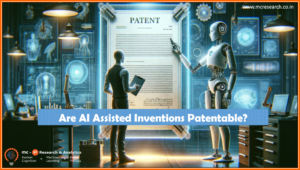What is NPL?
Non-Patent Literature is any document which is publically available such as journals, digital documents, datasheets, news, technical papers, thesis, product manuals, etc.
Why NPL search is necessary?
NPL searches are essential for sequence and structure searches since a lot of known sequences and chemical names are available there as standard information.
NPL search aids in quick understanding of the competitors in a technology area and give rapid ideas to innovate.
NPL search can be combined with patent searches such as landscape search, invalidity search, patentability search, etc.
For searching NPL there are many commercial databases such as Scifinder, Scopus, Google Scholar, IEEE, Research Gate. Etc. and for searching journals (Nature, Springerlink, ScienceDirect, Wiley Online Library, etc. are most famous ones).
Technical manuals, user guides, marketing material etc. also form a part of NPL documents.
By identifying relevant non-patent literature references, one can check for patents published / filed by the same author of non-patent literature, thereby providing a comprehensive analysis of any IP related search.
How to perform NPL search or more particularly NPL Citation search?
There is a tremendous increase in the NPL citations and have acquired equal emphasis when compared to performing patent citations studies. NPL will be cited as a prior art for patent application / granted patents in European patent registry or WIPO International Search Report documents. So it is essential to do NPL citation search while conducting prior art searches or invalidity searches to understand and identify the technology and novelty of the patents in contention.
Patent cooperation has been developed over many years by the world’s leading patent offices, providing open access to both their own datasets and the shared collections of other offices, such as the Patentscope database of the World Intellectual Property Organization or the Espacenet database of the European Patent Office. In the area of citations, there is the five IP office cooperation project, made up of the offices in Europe, the United States of America, Japan, Korea and China, whose aim is to improve patent examination processes, with services and applications such as the Common Citation Document (CCD) citation consultation tool or the Global Dossier initiative, which provides access to documents associated with the process of granting patents, including lists of bibliographic references submitted by the applicant and examiner, as well as the terms and classifications used in the Prior Art search. Other open sources of information in which NPL citations can be consulted are the specialized patent search engines that compile large collections of data, such as Google Patents or Lens.org, which, in addition to providing information on NPL references, also have tools for analysing the data, such as maps connecting articles and patents through citation networks in which the influence of scientific research on inventions can be observed.
NPL is assigned with reference numbers such as XP followed by serial number of maximum nine digits; eg: XP000012345 in Espacenet. One can use this number and can search in smart search in Espacenet database.
Also one can use DOI (digital object identifier) in smart search box in Espacenet for searching particular NPL.
Patent offices like USPTO, EPO, JPO also have in-house databases to search NPLs for effective examination of patent applications. EPO has more than 30,000 NPL documents that can be searched and analysed for any kind of IP search.
From the academic/scientific point of view, NPL citations provide information on the impact of scientific production cited in patents, on questions related to the productivity of authors, evaluation of journals, influence and cooperation of research institutions, or citation averages by discipline.
Conclusion:
Any literature which is not a patent application / publication will come under non-patent literature. NPL search can help you identify top assignees and provide an idea of competitors working in that domain and plays an important role as a prior art for an invention. Scientific journals are among the main sources for identifying non-patent literatures.
How can MCRPL help?
MCRPL is a 20-year-old company that undertakes all kinds of searches involving all scientific, and technical information that exists. Our team consists of several experts holding Masters and Ph.D. degrees in different fields. We apply extensive resources and knowledge to work on several challenging and extremely complex searches.
We use the Human-plus-Machine approach (MCRANK) to ensure that our quality output is immaculate, with well-maintained and documented SOPs, and internal manuals for working on typical IP projects. We have many patent agents that give us an edge in performing complex searches.
© Molecular Connections Private Limited
For more information, contact priorart@molecularconnections.com
For more updates subscribe IP Tech Insider






